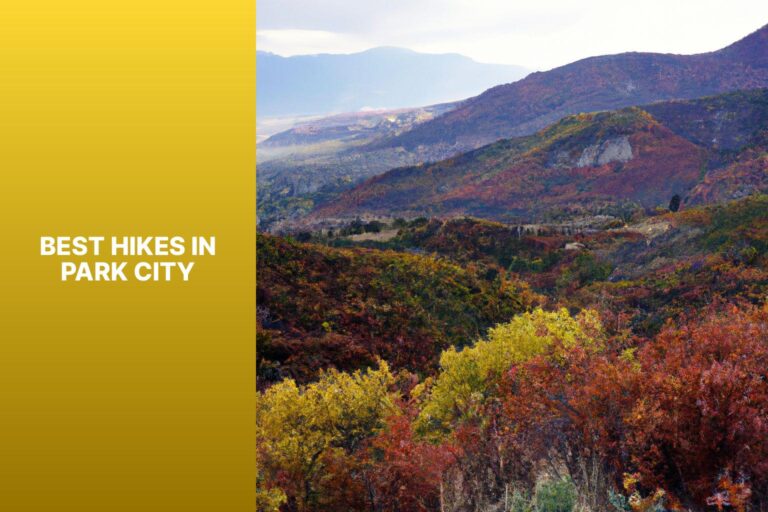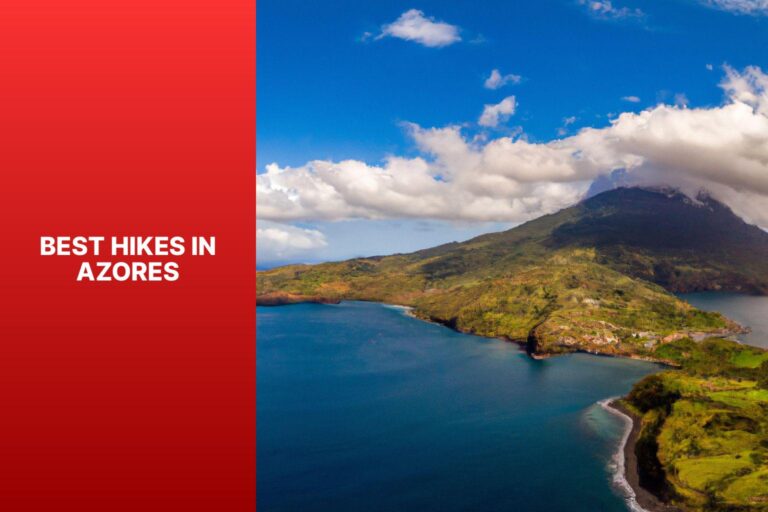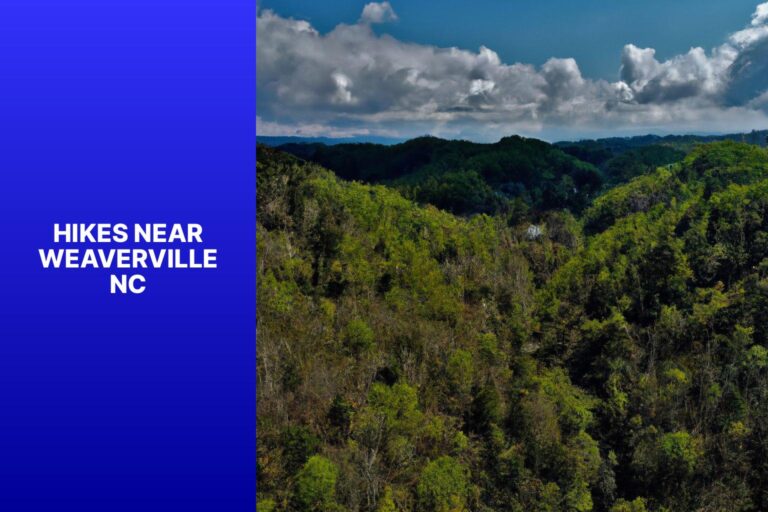Hardest Hikes in New England
New England is a hiker’s paradise, offering a range of challenging and scenic trails. For those seeking a thrilling adventure, there are several hikes in the region known for their difficulty and rugged beauty. These hikes will put your endurance, physical abilities, and mental strength to the test. Here are some of the hardest hikes in New England:
- Mount Washington:
- Trail Options for Mount Washington
- Level of Difficulty of Mount Washington Hike
- Mahoosuc Notch:
- Challenges of Hiking Mahoosuc Notch
- Scenic Views along Mahoosuc Notch
- Mount Katahdin:
- Various Trails to Reach Mount Katahdin
- Dangers and Precautions for Mount Katahdin Hike
- The Presidential Traverse:
- Overview of the Presidential Traverse
- Recommended Season and Essential Gear for the Presidential Traverse
These hikes offer unique challenges and rewards, from steep ascents and rocky terrains to breathtaking panoramic views. It is important to be well-prepared, physically fit, and equipped with proper gear to ensure a safe and enjoyable experience. So, if you’re ready to embark on an unforgettable journey and push your hiking limits, these are the trails to conquer in New England.
Key takeaway:
- Hardest Hikes in New England offer a challenging adventure: These hikes provide a thrilling experience for avid hikers, with steep trails and rugged terrains that test their endurance and skills.
- Mount Washington offers an exhilarating challenge: With multiple trail options, hiking Mount Washington presents a difficult yet rewarding experience, allowing hikers to conquer its formidable peak.
- Mahoosuc Notch offers a unique and challenging adventure: Known for its rugged terrain, hikers face numerous challenges along the Mahoosuc Notch, making it one of the hardest hikes in New England. The scenic views make it a memorable journey.
Mount Washington
Looking to tackle an epic hiking challenge in New England? Look no further than Mount Washington. This majestic peak offers a range of trail options, each with their own level of difficulty. From treacherous ascents to breathtaking vistas, get ready for an adrenaline-fueled adventure. Lace up your boots and join us as we dive into the heart-pumping trail options and the level of difficulty that awaits you on Mount Washington. Get ready to push your limits and conquer one of the toughest hikes in the region.
Trail Options for Mount Washington
The trail options for Mount Washington are as follows:
1. Tuckerman Ravine Trail: This popular trail starts at Pinkham Notch and ascends the mountain through the Tuckerman Ravine. It is challenging and offers stunning views. This trail is best suited for experienced hikers.
2. Lion Head Trail: Also accessed from Pinkham Notch, this trail provides a slightly less challenging route to the summit of Mount Washington. It includes rocky terrain and steep ascents, but offers beautiful views along the way.
3. Huntington Ravine Trail: Known for its steep and rugged terrain, this trail starts at Pinkham Notch and takes you through the challenging Huntington Ravine before reaching the summit of Mount Washington. This trail is suited for experienced hikers.
4. Boott Spur Trail: Starting at Pinkham Notch, this trail offers a longer, less steep route to the summit of Mount Washington. It provides breathtaking views of the surrounding mountains and is a great option for hikers seeking a less crowded trail.
5. Ammonoosuc Ravine Trail: This trail starts at the Ammonoosuc Ravine parking area and takes you through the beautiful and scenic Ammonoosuc Ravine. It is less steep compared to other trails and offers a more moderate ascent to the summit of Mount Washington.
When choosing a trail to hike Mount Washington, it is important to consider your experience level, fitness level, and available time. Make sure to have proper hiking gear, including appropriate footwear, clothing, and navigation tools. Always check the trail conditions and weather forecast before heading out, as conditions can change rapidly on Mount Washington. For safety reasons, it is advisable to hike with a group or inform someone about your hiking plans.
Level of Difficulty of Mount Washington Hike
The level of difficulty of the Mount Washington hike varies depending on the chosen route and weather conditions. Here are some factors to consider when assessing the difficulty:
– Terrain: The trails on Mount Washington can be rocky and steep, requiring good balance and endurance. Some sections may require scrambling or using hand holds for stability.
– Weather: Mount Washington is known for its unpredictable and harsh weather conditions. High winds, low visibility, and rapidly changing temperatures can make the hike more challenging and dangerous.
– Elevation: Mount Washington is the highest peak in the Northeast, reaching an elevation of 6,288 feet. The steep ascent and descent can be physically demanding, especially for those not accustomed to hiking at high elevations.
– Trail conditions: The trail conditions can vary throughout the year, with sections covered in snow or ice during the winter months. It is important to check trail reports and be prepared for any obstacles or hazards.
– Time and distance: The Mount Washington hike can range from a 4-6 hour round trip to a full-day adventure, depending on the chosen route and individual hiking pace. Plan accordingly and start early.
Mahoosuc Notch
The rugged and unforgiving terrain of Mahoosuc Notch presents a thrilling and daunting adventure for hikers. From the challenges that lie ahead to the breathtaking scenic views that await, this section will uncover the raw beauty and trials of tackling Mahoosuc Notch. Lace up your boots, brace yourself for an adrenaline-pumping journey, and get ready to immerse yourself in one of the most challenging hikes in New England.
Challenges of Hiking Mahoosuc Notch
Hiking the Mahoosuc Notch presents a variety of challenges due to its difficult terrain and unpredictable weather. This particular section of the Appalachian Trail is widely regarded as one of the toughest. To successfully navigate this trail, hikers must be prepared for steep and rocky sections, as well as narrow passages nestled between massive boulders. The ground itself can be quite treacherous and unstable.
Hikers should take into account the significant elevation gain. This demanding aspect of the trail necessitates good physical fitness and the use of proper hiking gear, particularly for tackling the steep ascents and descents.
Given that the Mahoosuc Notch is a remote area, hikers must exercise caution and rely on themselves for assistance. It’s important to be aware that help or rescue opportunities are limited in this region. Additionally, cell phone reception may not be reliable. To ensure safety, it is highly recommended to inform someone of your hiking plans and expected return times.
Scenic Views along Mahoosuc Notch
- Hiking through Mahoosuc Notch rewards you with breathtaking scenic views along Mahoosuc Notch of rugged mountains and dense forests.
- The towering peaks and dramatic landscape surrounding Mahoosuc Notch offer panoramic vistas along Mahoosuc Notch.
- From various points along the trail, you can admire the beauty of the Mahoosuc Range and the unique rock formations of Mahoosuc Notch while enjoying the scenic views along Mahoosuc Notch.
- Appreciate the stunning views along Mahoosuc Notch as you navigate through the challenging terrain.
- Clear days provide glimpses of distant mountain ranges along Mahoosuc Notch.
- The scenic vistas along Mahoosuc Notch showcase the untouched natural beauty of New England.
- Immerse yourself in nature’s tranquility and enjoy the magnificent scenic views along Mahoosuc Notch on this hike.
- Whether you’re experienced or a beginner, the scenic views along Mahoosuc Notch make every step worth it.
Fact: Mahoosuc Notch is one of the most challenging sections of the Appalachian Trail, attracting adventurous hikers looking for a physical and visual adventure.
Mount Katahdin

Photo Credits: Jasonexplorer.Com by Nathan Rivera
Mount Katahdin, the crown jewel of New England’s hiking scene, beckons adventure-seeking enthusiasts with its rugged beauty and challenging trails. Embark on a thrilling journey as we unveil the various trails that lead to the summit of Mount Katahdin, each offering its own unique set of obstacles and rewards. But tread cautiously, as this section also explores the dangers and precautions one must be aware of when braving the heights of this majestic peak. Get ready to lace up your hiking boots and conquer the mighty Mount Katahdin!
Various Trails to Reach Mount Katahdin
Various Trails to Reach Mount Katahdin
To reach Mount Katahdin, hikers can choose from several trails:
1. Hunt Trail: This is the most popular trail to reach Mount Katahdin. It starts at Katahdin Stream Campground and is about 5.2 miles long. The trail offers stunning views and takes hikers through a gradual ascent to the summit.
2. Knife Edge Trail: The Knife Edge Trail is a thrilling and challenging route to the summit, suitable for experienced and adventurous hikers. This narrow and exposed ridge provides breathtaking views but requires extreme caution and a head for heights.
3. Abol Trail: With its steep and rugged terrain, the Abol Trail is a tough but rewarding option for reaching Mount Katahdin. Hikers will encounter rocky sections and challenging scrambles on their way to the top.
4. Cathedral Trail: The Cathedral Trail is a more technical ascent, popular among experienced rock climbers. It involves climbing through sections with handholds and can be physically demanding.
5. Chimney Pond Trail: Starting at Chimney Pond Campground, this trail offers a shorter and less demanding route to Mount Katahdin. It provides scenic views and is suitable for hikers of various skill levels.
Before attempting any of these trails, hikers must be well-prepared. Checking trail conditions, bringing essential gear, and starting the hike early are crucial for a safe and enjoyable experience. Hikers should also consider the time of year, as weather conditions can vary and impact trail difficulty. By carefully choosing a trail that matches their skill level and taking necessary precautions, hikers can successfully reach the summit of Mount Katahdin.
Dangers and Precautions for Mount Katahdin Hike
When hiking Mount Katahdin, be aware of several dangers and take precautions.
Mount Katahdin is the highest peak in Maine and has rugged terrain and unpredictable weather. Prepare for extreme weather changes, even in the summer.
Steep and rocky trails are a significant danger on Mount Katahdin. Be cautious when navigating them. Take your time, wear proper footwear with good traction to prevent slipping and falling. Use hand holds and hiking poles for balance and stability.
Proper planning and preparation are essential. Check trail conditions and weather forecasts before starting your hike. Bring enough water, food, and clothing, including layers for changing temperatures and precipitation.
Be aware of encounters with wildlife, including bears. Make noise while hiking to alert wildlife of your presence. Carry bear spray as a precaution.
Inform someone of your hiking plans, including your intended route and estimated return time. This ensures prompt assistance in case of an emergency.
By being aware of these dangers and taking necessary precautions, you can enjoy the challenge and beauty of Mount Katahdin while staying safe.
The Presidential Traverse
Get ready for a thrilling adventure as we dive into the epic challenge of The Presidential Traverse in the New England region. This iconic hike is not for the faint of heart, but it promises breathtaking views and a sense of accomplishment like no other. In this section, we’ll provide an overview of The Presidential Traverse, including its difficulty level and highlights along the way. We’ll also share recommendations on the best season to tackle this beast and the essential gear you’ll need to conquer the traverse. So lace up your boots, because this is one hike you won’t want to miss!
Overview of the Presidential Traverse
The Presidential Traverse is a challenging hiking route in New England. It covers approximately 23 miles and crosses the Presidential Range of the White Mountains in New Hampshire. Hikers enjoy stunning panoramic views of the surrounding mountains and valleys on this route. It is not suitable for inexperienced hikers and requires proper preparation.
The Presidential Traverse offers an overview of the stunning White Mountains region. This hiking route allows adventurers to experience the beauty of nature while challenging themselves both mentally and physically. Starting early and taking advantage of favorable weather conditions is crucial for a successful California’s toughest hikes.
The route includes summits of notable peaks such as Mount Washington, Mount Adams, and Mount Jefferson. Hikers can expect rugged terrain, steep ascents and descents, and changing weather. The changing weather conditions add an element of unpredictability and excitement to the journey.
To embark on the Presidential Traverse, hikers must plan accordingly. It is important to have appropriate gear, including hiking boots, layers of clothing, and navigation tools. These essential items will ensure hikers are prepared for any challenge they may face along the way.
Hikers should exercise extreme caution and stay aware of their surroundings when undertaking the Presidential Traverse. Trail conditions can change rapidly, so it is essential to be informed about potential hazards or closures. This will help hikers navigate the route safely and enjoy a memorable adventure.
Fun Fact: The Presidential Traverse is named after the peaks in the Presidential Range, which honor various U.S. presidents. This adds a touch of historical significance to the journey, providing hikers with a deeper appreciation for the area they are exploring.
Recommended Season and Essential Gear for the Presidential Traverse
When planning to traverse the Presidential Range in New England, it’s important to consider the recommended season and essential gear for a safe and enjoyable hike. The recommended season for the Presidential Traverse is from June to September. This is the best time to go because the weather is more stable during this period, reducing the chance of encountering snow or extreme conditions.
To tackle the challenging terrain and unpredictable weather, hikers should make sure to have the essential gear listed below:
| 1. Sturdy hiking boots with good ankle support: | These are necessary for navigating rocky and uneven terrain. |
| 2. Layered clothing: | It’s important to dress in layers to adapt to rapid weather changes. |
| 3. Rain gear: | A waterproof jacket and pants will protect you against sudden showers. |
| 4. Sun protection: | Make sure to wear a wide-brimmed hat, sunglasses, and sunscreen to prevent sunburn at higher altitudes. |
| 5. Navigational tools: | It’s crucial to carry a map, compass, and GPS for route navigation, especially in low visibility. |
| 6. First aid kit: | It’s always a good idea to have a well-stocked kit for minor injuries or emergencies. |
| 7. Basic survival equipment: | Bring a headlamp, whistle, emergency blanket, and fire starter for unexpected overnight stays. |
| 8. Ample water and food: | Stay hydrated and energized by carrying enough water and high-energy snacks. |
| 9. Trekking poles: | These will provide stability and support on challenging terrain. |
By hiking during the recommended season and being prepared with the essential gear, you will increase your chances of completing the Presidential Traverse successfully while ensuring your safety and enjoyment on this challenging adventure.
Frequently Asked Questions
What are some challenging hiking trails in New England?
Some challenging hiking trails in New England include the Huntington Ravine Trail on Mt Washington, the Mahoosuc Trail in the Mahoosuc mountain range, the Ice Gulch Path in Randolph, NH, the Precipice Trail in Acadia National Park, and the Devil’s Path in the Catskills.
Are there any recommended trails with mountain views in New England?
Yes, there are several trails in New England that offer beautiful mountain views. The Great Gulf Trail in New Hampshire provides stunning views of the surrounding mountains, including the Gulf and the Presidential Range. The Tuckerman Ravine Trail on Mt Washington also offers scenic vistas, as well as the North Slide on North Tripyramid and the ledges on South Baldface.
Can you provide information about camping options near challenging hiking trails in New England?
When hiking challenging trails in New England, there are often designated backcountry campsites available. The Great Gulf Trail, for example, has designated campsites along the trail. It is recommended to check trail guides and maps for camping options specific to each trail you plan to hike.
What are some tips for hiking in September in New England?
Hiking in September in New England can provide optimal conditions. Some tips for hiking during this time include starting your hikes early to avoid crowds, being prepared for adverse weather conditions, bringing electrolytes and Ibuprofen for energy and pain relief, and enjoying the peak fall foliage. It is also advisable to bring a real camera for high-quality photos and to stay updated on road closures in the White Mountain National Forest.
Is an REI membership beneficial for hiking in New England?
Yes, having an REI membership can offer discounts on hiking gear and equipment, which can be useful when tackling challenging trails in New England. It is worth considering if you plan to hike frequently or require specialized gear.
Where can I find a list of the scariest trails in New Hampshire?
The Terrifying 25 is a list of the scariest trails in New Hampshire. This list, created by Alex, Sage & Patricia Herr, includes trails with rock scrambles, scree slopes, boulder caves, ladders, and rock slides. You can find more information about the Terrifying 25 on the official website for the list or in the guidebook “AMC’s White Mountain Guide.”







